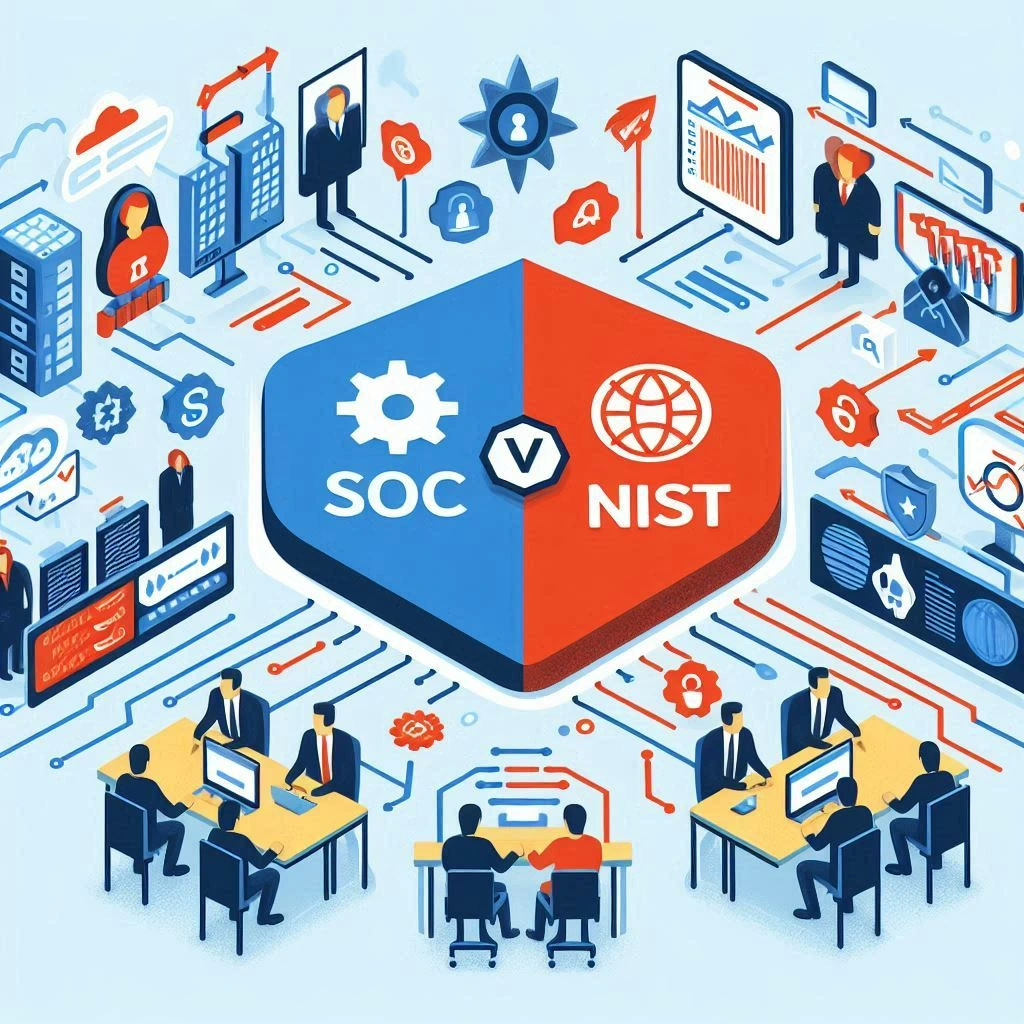Introduction to ISO 27001 Audit
ISO 27001 is an internationally recognized standard that outlines the requirements for establishing, implementing, maintaining, and continually improving an Information Security Management System (ISMS). The primary objective of ISO 27001 is to help organizations manage the security of their information assets effectively. This includes ensuring the confidentiality, integrity, and availability of sensitive data, which is crucial in today’s digital landscape where data breaches and cyber threats are prevalent.
Importance of ISO 27001 in Information Security Management
The significance of ISO 27001 in information security management cannot be overstated. By adhering to this standard, organizations can:
- Mitigate Risks: ISO 27001 provides a structured approach to identifying and managing risks associated with information security. This proactive stance helps organizations to minimize potential vulnerabilities and threats to their data.
- Enhance Trust: Achieving ISO 27001 certification demonstrates to clients, partners, and stakeholders that an organization is committed to maintaining high standards of information security. This can enhance trust and credibility in the marketplace.
- Ensure Compliance: Many regulatory frameworks and legal requirements mandate the protection of personal and sensitive information. ISO 27001 helps organizations align their practices with these regulations, thereby ensuring compliance and avoiding potential penalties.
Overview of the Audit Process and Its Relevance in Compliance
The audit process is a critical component of maintaining ISO 27001 compliance. It involves a systematic examination of the ISMS to assess its conformity with the standard’s requirements. The audit process typically includes:
- Internal Audits: Conducted by the organization itself or by third-party auditors, internal audits are essential for identifying gaps in the ISMS, assessing risks, and ensuring readiness for external certification audits. They provide valuable insights into the effectiveness of the ISMS and highlight areas for improvement [1][12].
- External Audits: These are performed by certification bodies to verify that the organization meets the ISO 27001 requirements. Successful completion of an external audit leads to certification, which is a testament to the organization’s commitment to information security [2][13].
Understanding ISO 27001 and its audit process is vital for internal auditors and audit managers. It not only helps in streamlining audit preparations but also ensures that organizations are well-equipped to protect their information assets and comply with relevant regulations.
Understanding the ISO 27001 Audit Framework
When preparing for an ISO 27001 audit, it is essential to have a clear understanding of the audit framework, which encompasses various components and processes. This section will outline the key elements of the ISO 27001 standard, the significance of Annex A controls, and the distinctions between internal and external audits.
Key Components of the ISO 27001 Standard
ISO 27001 is a comprehensive framework designed to help organizations establish, implement, maintain, and continually improve an Information Security Management System (ISMS). The key components of the ISO 27001 standard include:
Information Security Management System (ISMS): The core of ISO 27001, the ISMS is a systematic approach to managing sensitive company information, ensuring its confidentiality, integrity, and availability. It involves people, processes, and IT systems by applying a risk management process.
Risk Assessment and Treatment: Organizations must identify and assess risks to their information assets and determine appropriate controls to mitigate those risks. This process is crucial for ensuring that the ISMS is effective and aligned with the organization’s objectives.
Continuous Improvement: ISO 27001 emphasizes the need for ongoing evaluation and improvement of the ISMS. This includes regular internal audits, management reviews, and updates to policies and procedures based on changing risks and business needs.
The Role of Annex A Controls in the Audit Process
Annex A of the ISO 27001 standard outlines a set of controls that organizations can implement to manage information security risks effectively. These controls are categorized into 14 domains, including:
- Access Control: Ensuring that only authorized personnel have access to sensitive information.
- Cryptography: Protecting data through encryption and other cryptographic measures.
- Physical and Environmental Security: Safeguarding physical assets and facilities from unauthorized access and environmental threats.
During the audit process, auditors assess the implementation and effectiveness of these controls to ensure compliance with the standard. The controls serve as a benchmark against which the organization’s security measures can be evaluated, helping to identify gaps and areas for improvement [5][14].
The Difference Between Internal Audits and External Audits
Understanding the distinction between internal and external audits is crucial for effective audit preparation:
Internal Audits: Conducted by the organization itself or by a third-party auditor, internal audits focus on evaluating the ISMS’s compliance with ISO 27001 requirements. They are essential for identifying vulnerabilities, assessing risks, and ensuring readiness for certification. Internal audits are typically performed at planned intervals, as mandated by the ISO 27001 standard [10][15].
External Audits: These audits are conducted by independent certification bodies to assess whether the organization meets the ISO 27001 standard’s requirements. External audits are crucial for obtaining and maintaining certification and often involve a more comprehensive review of the ISMS, including documentation, processes, and controls [2][11].
By understanding these components and processes, internal auditors can better prepare for ISO 27001 audits, ensuring that their organizations meet the necessary compliance standards and effectively manage information security risks.
Checklist Preparation: Key Steps
Preparing for an ISO 27001 audit is a critical process that requires careful planning and organization. Below is a practical checklist designed to streamline the audit preparations for internal auditors and audit managers.
- Define the Scope of the Audit: Clearly outline the boundaries of the audit, including which areas of the Information Security Management System (ISMS) will be assessed. This involves determining the specific processes, departments, and controls that will be included in the audit. A well-defined scope helps focus the audit efforts and ensures that all relevant aspects of the ISMS are evaluated effectively [6][10].
- Identify and Assemble the Audit Team: Select a team of qualified internal auditors who possess the necessary skills and knowledge of ISO 27001 standards. It is essential to ensure that the team members understand their roles and responsibilities within the audit process. This may include designating a lead auditor to coordinate the audit activities and facilitate communication among team members [5][10].
- Gather Relevant Documentation and Records: Collect all necessary documentation that supports the ISMS, including policies, procedures, risk assessments, and previous audit reports. This documentation serves as the foundation for the audit and provides auditors with the information needed to assess compliance with ISO 27001 requirements. A thorough review of these documents prior to the audit can help identify any gaps or areas that require further attention [4][6][9].
- Schedule Audit Activities and Define Timelines: Develop a detailed audit schedule that outlines the timeline for each phase of the audit process. This includes planning for preliminary meetings, fieldwork, and reporting. Establishing clear timelines helps ensure that the audit is conducted efficiently and that all necessary activities are completed within the designated timeframe. It is also important to communicate the schedule to all stakeholders involved in the audit [2][4][8].
By following this checklist, internal auditors can enhance their preparation for an ISO 27001 audit, ensuring a thorough and effective evaluation of the organization’s information security management practices. This structured approach not only facilitates compliance but also contributes to the overall improvement of the ISMS [3][5].
Document Review and Assessment
Preparing for an ISO 27001 audit requires meticulous attention to documentation, as it forms the backbone of the audit process. Internal auditors and audit managers can streamline their preparations by following a practical checklist that ensures all necessary documents are reviewed and assessed effectively. Here are the key points to consider:
Essential Documents for Review
Information Security Management System (ISMS) Policy: This foundational document outlines the organization’s approach to managing information security. It should clearly define the scope, objectives, and responsibilities related to the ISMS.
Risk Assessments: Comprehensive risk assessments are crucial for identifying potential threats and vulnerabilities. Auditors should review the latest assessments to ensure they are up-to-date and reflect the current risk landscape.
Statement of Applicability (SoA): This document lists all the controls that are applicable to the organization, along with justifications for their inclusion or exclusion. It serves as a critical reference point during the audit.
Internal Audit Reports: Previous internal audit findings provide valuable insights into areas that may require further attention. Reviewing these reports helps auditors understand past issues and the effectiveness of corrective actions taken.
Management Review Records: Documentation from management reviews should be assessed to ensure that top management is actively involved in the ISMS and that necessary improvements are being addressed.
Incident Management Records: Auditors should examine records of security incidents to evaluate how effectively the organization responds to and learns from security breaches.
Training and Awareness Records: Documentation related to employee training on information security policies and procedures is essential to assess the organization’s commitment to fostering a security-aware culture.
Importance of Reviewing Previous Audit Findings
Reviewing previous audit findings is critical for several reasons:
Identifying Recurring Issues: By analyzing past findings, auditors can identify patterns or recurring issues that may indicate systemic weaknesses in the ISMS.
Evaluating Corrective Actions: Auditors can assess whether corrective actions taken in response to previous findings were effective and whether similar issues have been adequately addressed.
Setting Focus Areas: Understanding past challenges allows auditors to prioritize their focus during the current audit, ensuring that high-risk areas receive the necessary attention.
Assessing the Effectiveness of Existing Controls
To ensure that the ISMS is functioning as intended, auditors must assess the effectiveness of existing controls. This can be achieved through:
Control Testing: Conducting tests on key controls to verify their functionality and effectiveness in mitigating identified risks.
Interviews and Observations: Engaging with personnel responsible for implementing controls can provide insights into how well these controls are integrated into daily operations.
Documentation Review: Evaluating the documentation related to controls, such as procedures and guidelines, helps auditors determine whether they are being followed consistently.
Performance Metrics: Analyzing performance metrics related to information security can help auditors gauge the overall effectiveness of the ISMS and its controls.
By following this checklist and focusing on these key areas, internal auditors can enhance their audit preparations, ensuring a thorough and effective ISO 27001 audit process.
Engaging Stakeholders
In the context of preparing for an ISO 27001 audit, engaging stakeholders is a critical component that can significantly influence the effectiveness and outcome of the audit process. Here are some key points to consider:
Identifying Key Stakeholders
- Management: Senior management plays a vital role in setting the tone for the audit process. Their commitment to information security and compliance is essential for fostering a culture of accountability and support.
- IT Department: The IT team is crucial as they manage the technical aspects of the Information Security Management System (ISMS). Their insights into existing controls and potential vulnerabilities are invaluable during the audit.
- Other Departments: Depending on the organization, other stakeholders may include HR, legal, and compliance teams. Each department can provide unique perspectives on how information security policies affect their operations.
Strategies for Effective Communication and Collaboration
- Regular Meetings: Schedule regular meetings with stakeholders to discuss audit objectives, expectations, and timelines. This helps ensure everyone is aligned and aware of their roles in the audit process.
- Clear Documentation: Provide clear and concise documentation outlining the audit process, including the scope, objectives, and criteria. This transparency fosters trust and encourages stakeholder engagement.
- Feedback Mechanisms: Establish channels for stakeholders to provide feedback and raise concerns. This can be done through surveys, informal discussions, or dedicated feedback sessions, allowing for a more inclusive audit process.
Gathering Insights and Input from Stakeholders
- Interviews and Surveys: Conduct interviews or surveys with key stakeholders to gather insights on the effectiveness of current security measures and identify areas for improvement. This information can help auditors understand the practical implications of policies and controls.
- Workshops and Training: Organize workshops or training sessions to educate stakeholders about the ISO 27001 requirements and the importance of their involvement in the audit. This not only enhances their understanding but also encourages active participation.
- Collaborative Review: Involve stakeholders in reviewing audit findings and recommendations. Their input can provide context and help prioritize actions based on operational realities.
Engaging stakeholders effectively not only enhances the audit process but also strengthens the overall information security posture of the organization. By fostering collaboration and communication, internal auditors can ensure a more comprehensive and successful ISO 27001 audit preparation.
Conducting the Audit: Best Practices
When preparing for an ISO 27001 audit, internal auditors and audit managers can enhance their efficiency and effectiveness by following a structured approach. Here’s a practical checklist that outlines best practices for executing the audit:
1. Developing an Audit Plan and Checklist
- Define the Scope and Objectives: Clearly outline the boundaries of the audit, including what will be assessed and the specific objectives to be achieved. This foundational step ensures that the audit is focused and relevant [3][9].
- Create a Detailed Audit Plan: Develop a comprehensive audit plan that includes the schedule, resource allocation, and methodologies to be used. This plan should also specify the roles and responsibilities of the audit team members [1][4].
- Prepare a Checklist: A well-structured checklist can serve as a guide throughout the audit process. It should include key areas to assess, such as compliance with ISO 27001 requirements, risk management practices, and the effectiveness of the Information Security Management System (ISMS) [2][5].
2. Conducting Interviews and Site Visits
- Engage with Staff: Conduct interviews with relevant personnel to gain insights into the practical implementation of the ISMS. This interaction can help auditors understand how policies and procedures are applied in real-world scenarios [14][15].
- Perform Site Visits: Observing operations firsthand is crucial. Site visits allow auditors to validate the effectiveness of security controls and practices in place, ensuring that they align with documented procedures [14][15].
3. Documenting Findings and Evidence Collection
- Collect Evidence Systematically: As the audit progresses, gather evidence to support findings. This may include reviewing documentation, policies, and procedures, as well as collecting data from interviews and observations [11][12].
- Document Findings Clearly: Ensure that all findings are documented in a clear and concise manner. This documentation should detail the evidence collected, the context of the findings, and any identified non-conformities or areas for improvement [10][11].
- Develop Corrective Actions: For any non-conformities identified, outline corrective actions that need to be taken. This proactive approach not only addresses issues but also contributes to the continuous improvement of the ISMS [2][8].
By following these best practices, internal auditors can streamline their audit preparations and execute the ISO 27001 audit more efficiently, ultimately leading to a more effective assessment of the organization’s information security management system.
Post-Audit Activities
After completing an ISO 27001 audit, it is crucial for internal auditors and audit managers to engage in a series of structured post-audit activities. These steps not only ensure compliance but also facilitate continuous improvement within the organization’s Information Security Management System (ISMS). Here’s a practical checklist to guide you through the post-audit process:
Analyzing and Reporting Audit Findings:
- Review the auditor’s report thoroughly to identify any nonconformities or areas of concern. This report will outline the findings from the audit, including any deficiencies in the ISMS that need to be addressed [5].
- Prepare a detailed analysis of the findings, categorizing them based on severity and impact. This will help prioritize which issues need immediate attention and which can be addressed over time [12].
Developing Action Plans for Areas of Improvement:
- For each identified nonconformity, develop a corrective action plan that outlines specific steps to rectify the issues. This plan should include timelines, responsible parties, and resources required for implementation [5][10].
- Ensure that the action plans are realistic and achievable, taking into account the organization’s capacity and resources. Regularly review and update these plans to reflect progress and any changes in circumstances [12].
Communicating Results to Stakeholders:
- It is essential to communicate the audit results and the subsequent action plans to all relevant stakeholders, including management, IT teams, and other departments affected by the audit findings. This transparency fosters a culture of accountability and encourages collaboration in addressing the identified issues [10].
- Schedule a post-audit meeting to discuss the findings and action plans, allowing stakeholders to provide input and ask questions. This engagement can enhance understanding and support for the necessary changes [11].
By following this checklist, internal auditors can effectively manage the post-audit phase, ensuring that the organization not only addresses any deficiencies but also strengthens its overall information security posture. This proactive approach will contribute to achieving and maintaining ISO 27001 certification, ultimately enhancing trust and confidence among clients and stakeholders [10].
Continuous Improvement in Audit Processes
In the realm of ISO 27001 audits, the pursuit of continuous improvement is essential for ensuring that internal audit processes remain effective and relevant. This section outlines key strategies that internal auditors and audit managers can implement to enhance their audit preparations and outcomes.
Feedback Loops for Future Audits
Establishing feedback loops is crucial for refining the audit process. After each audit, auditors should gather insights from various stakeholders, including team members and management. This feedback can help identify:
- Strengths and Weaknesses: Understanding what worked well and what did not can guide future audit strategies.
- Process Improvements: Feedback can reveal areas where the audit process can be streamlined or made more efficient, ensuring that resources are utilized effectively.
- Stakeholder Engagement: Engaging with stakeholders fosters a culture of collaboration and transparency, which can enhance the overall audit experience.
Integrating Lessons Learned into Future Audit Preparations
The integration of lessons learned from previous audits is vital for continuous improvement. Internal auditors should:
- Document Findings: Maintain a comprehensive record of audit findings, including non-conformities and successful practices. This documentation serves as a valuable reference for future audits.
- Develop Action Plans: Create actionable plans based on lessons learned to address identified gaps and enhance compliance with ISO 27001 standards.
- Training and Development: Use insights from past audits to inform training programs for auditors, ensuring they are equipped with the latest knowledge and skills necessary for effective auditing.
Adapting to Changes in ISO 27001 Standards and Organizational Needs
ISO 27001 standards are subject to updates and revisions, and organizations may also undergo changes that impact their information security management systems (ISMS). To remain compliant and effective, internal auditors should:
- Stay Informed: Regularly review updates to ISO 27001 standards and incorporate relevant changes into audit preparations. This ensures that audits reflect the most current requirements.
- Assess Organizational Changes: Monitor changes within the organization, such as new technologies, processes, or regulatory requirements, and adapt audit plans accordingly to address these developments.
- Flexibility in Audit Planning: Develop a flexible audit plan that can be adjusted as needed to accommodate changes in both the ISO standards and the organization’s operational landscape.
By focusing on these key areas, internal auditors can foster a culture of continuous improvement within their audit processes. This not only enhances the effectiveness of audits but also contributes to the overall resilience and compliance of the organization’s information security management system.
Conclusion
In conclusion, the preparation for an ISO 27001 audit is a critical component that can significantly influence the success of the audit process. Utilizing a well-structured checklist serves as a practical tool for internal auditors, ensuring that all necessary steps are taken to assess compliance with the ISO/IEC 27001 standard effectively. This checklist not only helps in organizing the audit process but also aids in identifying potential gaps and areas for improvement within the Information Security Management System (ISMS) [1][4].
The role of internal auditors extends beyond merely conducting audits; they are pivotal in maintaining ongoing compliance with ISO 27001 requirements. By thoroughly preparing for audits, internal auditors can provide valuable insights that contribute to the continuous improvement of the ISMS. This proactive engagement not only enhances the organization’s security posture but also fosters a culture of accountability and diligence in information security practices [2][7].
As we look to the future, it is essential for internal auditors and audit managers to adopt a proactive approach in their audit preparations. This means regularly updating the audit checklist, staying informed about changes in the ISO 27001 standard, and continuously assessing the effectiveness of the ISMS. By doing so, organizations can ensure they are not only compliant but also resilient against emerging security threats [6][12]. Embracing this proactive mindset will ultimately lead to more successful audits and a stronger commitment to information security across the organization.
Find out more about Shaun Stoltz https://www.shaunstoltz.com/about/
This post was written by an AI and reviewed/edited by a human.



